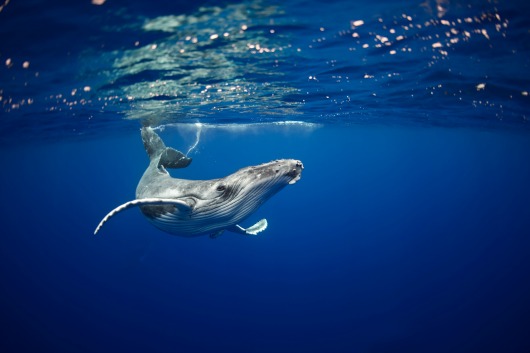New book reveals the fascinating life of whales

A new book described as a “whirlwind time travel” through 50 million years of the evolution of whales reveals a fascinating insight into the planet’s most loved, but vulnerable, sea mammals.
Written by four University of St Andrews researchers, the book has been published by the Natural History Museum to tie in with a major new exhibition on the creatures.
Professor Philip Hammond, Dr Sonja Heinrich, Dr Sascha Hooker and Professor Peter Tyack of the Sea Mammal Research Unit at the University, combined their specialised expertise to take the reader on a round-the-world voyage to discover how whales have evolved over the past 50 million years, how they live their lives today, and how they are threatened by human activities.
Whales: their past, present and future also highlights some of the fascinating lesser-known facts about various whale species, such as the ability of Cuvier’s beaked whales to dive to depths of up to two miles under the ocean’s surface and to hold their breath for more than two hours.
The book also reveals that the whale’s ancient ancestor, the archaeocetes, had teeth typical of carnivores and walked on four legs; and that the modern hippopotamus is the land-mammal most closely related to the whale.
The authors hope that the book will engage readers, and visitors to the exhibition in London who wish to find out more, including young people who may be inspired by the strong conservation message in the book which highlights the current threats to whales such as fisheries, chemical and noise pollution, shipping and climate change.
Professor Hammond said: “We invite the reader to join us on a whirlwind time travel through 50 million years of evolution, on a round-the-world voyage to the marine environments of our planet, and on a breath-taking plunge to the greatest ocean depths.
“Whales include the largest creatures to have roamed this planet but some of the smallest whales are struggling to avoid extinction. We hope readers, and visitors to the exhibition will be inspired to help conserve these amazing mammals and ensure they remain as integral components of marine ecosystems. The better we understand the lives of whales, the better we will be able to inform decisions made about managing human influence on them.”
Key facts:
- Whales have evolved a long life span to offset their slow reproduction rate – it can take several years to raise a calf and become pregnant again
- The bowhead whale may live as long as 200 years
- Sperm whales suckle for as long as 13 years and males take 20 or more years to mature
- Toothed whales make underwater sounds to sense their environment, communicate with each other and hunt their prey
- Humpback whales hold song competitions
- Whales learn communication sounds from each other, forming a kind of animal culture that can spread for years over thousands of miles
Whales: Beneath the Surface runs until 28 February 2018 at the Natural History Museum, London. It forms part of an extended season of events exploring the awesome power of nature and our responsibility to protect our oceans.
ENDS
Issued by the University of St Andrews Communications Office. Contact Fiona MacLeod on 01334 462108 / 07714 140 559 or [email protected].
Category Research